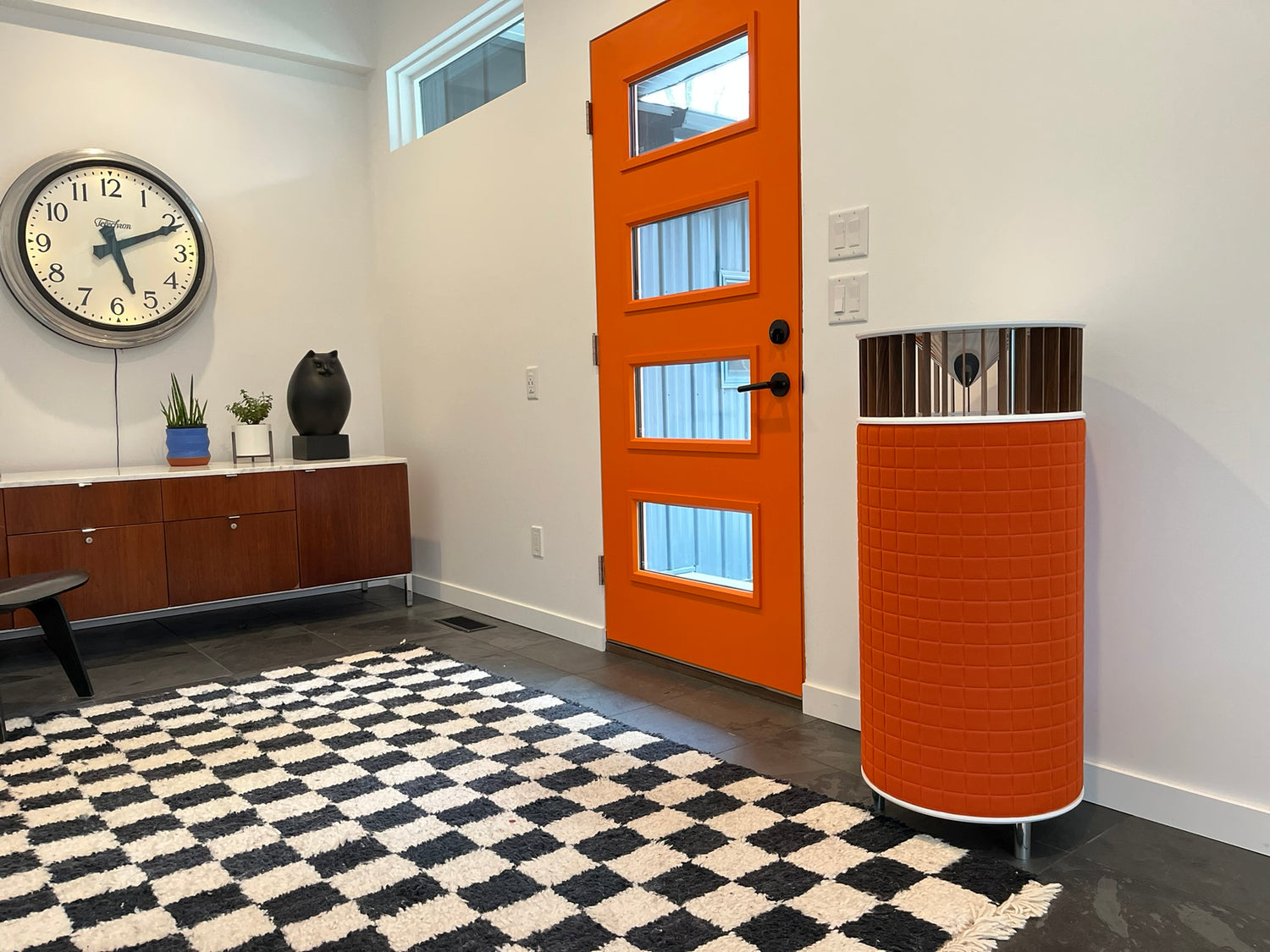Frequently Asked Questions (FAQs)
A: No. Our products are traditional passive stereo speakers. Simply connect a pair of Phillips Design speakers to your existing amplifier or stereo system with high-quality speaker cable.
A: No. A speaker must be powered / active (have its own internal amplifier) in order to utilize a built-in Bluetooth wireless module. To stream wirelessly to our speakers, simply connect via Bluetooth to your stereo receiver or pre-amplifier. Or, connect your AppleTV / Roku / Chromecast / etc. to your system and then connect via Bluetooth or Wi-Fi to that device.
A: Two. Phillips Design speakers are sold in matched pairs, one for the left channel, and one for the right channel, to produce stereophonic (two-channel) sound.
A: Absolutely. Used as the front main speaker pair, OH-16 can maximize enjoyment of movies, TV shows, recorded concerts, and music. You can even use OH-16 for surround speakers, but soon, additional (smaller) models in the Oh! product line will be released.
A: No. You certainly can use a subwoofer, but each OH-16 speaker has a massive 12-inch carbon-fiber woofer, delivering powerful bass right down to the bottom octave. If you feel you need more bass than the flat frequency response of OH-16 delivers naturally, feel free to adjust the low- and mid-bass up with your tone control, equalizer, or room-correction system (like Audyssey), or switch on the 'loudness' or 'Dynamic EQ' function of your pre-amp/receiver. OH-16 can produce massive amounts of bass, but remember to use an amplifier with enough power to deliver.
Q: What kind of amplifier should I use with these speakers?A: We recommend a high-quality amplifier with at least 50 watts per channel to power our speakers, but more is better. This could be a stand-alone audiophile-grade 2-channel power amplifier or stereo receiver, a multi-channel home theater amplifier, or a multi-channel home theater receiver. Separate audiophile-grade power amplifiers (either tube or transistor) with 200 watts per channel are highly-recommended. The better your amp and other gear, the better your speakers will sound.
A: We recommend at least 16-gauge stranded copper wire or larger, in lengths not greater than 25 feet. An audiophile might prefer a much heavier or more exotic speaker cable in a shorter length, such as KimberKable's 12TC speaker cables in the internal bi-wire configuration, in an 8-foot length. Even an esoteric cable set like Argent Pur's solid silver conductor speaker cables make for an amazing pairing. Use the best cable you can afford.
Q: What is bi-wiring or bi-amplifying?A: You'll need two sets of speaker cables for this - two left channel +/- pairs and two right channel +/- pairs.
Bi-wiring means connecting two positive wires (+ or red) and two negative wires (- or black) to the left channel terminals on your amplifier or receiver, and the same for the right channel. Using two complete sets of speaker cables, you'll connect four wires to each speaker instead of two. Or, you can use a cable set designed for bi-wiring, i.e. a single +/- pair connecting to your amp on one end, and a double +/- pair connecting to the speakers on the other end, i.e. speaker wire made into a Y-cable.
Bi-amplifying means using two separate two-channel amplifiers to drive the speakers, with two completely separate sets of cables going to the speakers, with the exact same signal going to both the high-frequency terminals and low-frequency terminals of each speaker. (Two left channel signals going to the left speaker, two right channel signals going to the right speaker.) Pro Tip: Many high-quality home theater receivers can do this if they have an Amp Assign function, i.e. assigning the rear speaker channels or zone 2 channels to bi-amplification duty for the front main speakers.
Our speakers use what is called passive bi-amplifying, such that both sets of signals received by each speaker should be identical, full-range signals. Each speaker's internal crossover then filters out the high frequencies from the woofer, and the low frequencies from the coaxial. No crossover is required (or recommended) before the amplifiers.
A: These arrangements separate the power going to the low-frequency driver from the power going to the coaxial (midrange/high-frequency) driver. Low-frequency drivers (woofers) consume massive amounts of power/energy compared to the higher-frequency units. Separating the power to the woofer theoretically filters out low-frequency magnetic resonances and power draw from the high-frequency part of the circuit, and allows the high-frequency amplifier to devote 100% of its energy to producing cleaner midrange and highs with minimized distortion.
A: It's pretty important. Since the omnidirectional concept of Oh! relies partly on adjacent wall reflections, pulling Oh! speakers a little further out from the back and side walls (18 inches / half-meter, or even more) will help them sound their best. It's always fun to experiment with speaker placement to find the best sound - how the soundstage and imaging changes, and how the bass response changes with placement. However, if your aesthetic concerns over-rule the potential for greater sound quality, our speakers won't necessarily sound 'bad' if they're right up against the walls. You might need to adjust the bass with your tone controls, and you'll lose some of the imaging / soundstage quality. Please refer to page 7 of our OH-16 User Guide for more details.
A: They can be reupholstered, however this requires significant disassembly and careful reassembly, including making proper wiring connections at the crossover. We do not recommend attempting this yourself, and your warranty will be void if you do. For a fee, we will be happy to reupholster your Oh! speakers in whatever upholstery you choose, with the assurance that it will be done to our exacting quality standards, and that your speakers will look, function, and sound exactly as they should upon completion. Please contact us if you require this service.

